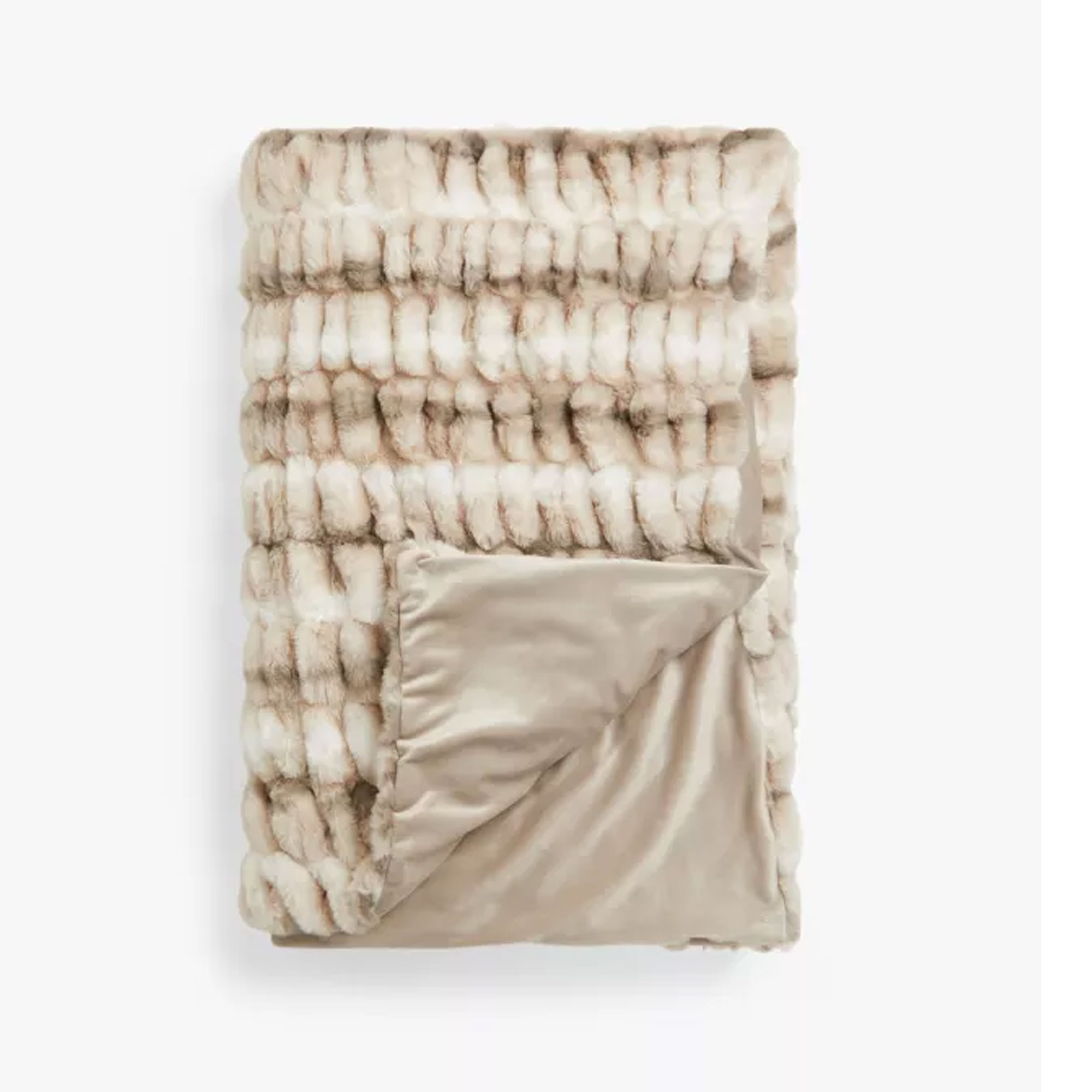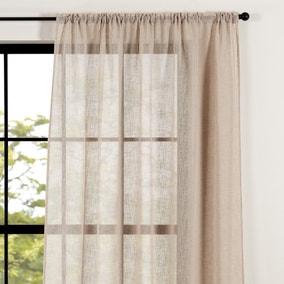Is your home making you SAD? Interior designers and experts share their tips for improving the mood
Make your home a happier place to hunker down to spend the autumn and winter months


Seasonal affective disorder – also known as SAD – affects a huge number of the population, but did you know that there are ways your interior design could help improve or prevent symptoms?
Exploring how to combat SAD is something at the forefront of many people's minds now that summer is almost over and we begin to spend more time indoors.
We all know how much of an impact our homes can have on the way we feel on a day-to-day basis, but homeowners might be surprised to learn that with a even just few simple tweaks, both the likelihood as well as the severity of symptoms of SAD can be reduced.
"As the days begin to grow shorter and the temperatures drop, it's not uncommon to experience a dip in mood," explains licensed psychotherapist Gayle Weill. "While there are various factors that contribute to SAD, your home environment can play a significant role."
We asked a range of interior and mental health professionals for their advice on how to design your interiors in a way that will help reduce SAD and create a more positive environment.
13 Interior Design Tips to help with Seasonal Affective Disorder

Once you begin to look into the causes of SAD, it begins to become a little clearer why the inside of our homes can have such a strong effect on our mood and also why the dopamine decor trend might have become so popular of late.
"One key aspect in what causes the onset of SAD is the changes in weather," explains Vikas Keshri, clinical director at Bloom Clinical Care Counselling and Therapy Services.
Sign up to our free daily email for the latest royal and entertainment news, interesting opinion, expert advice on styling and beauty trends, and no-nonsense guides to the health and wellness questions you want answered.
"SAD occurs most commonly during the autumn to winter months when there are decreased levels of sunlight and gloomier skies. Couple this with the colder temperatures and it predisposes our psyches to go through the darker, more sombre parts of our minds. Also, our serotonin and melatonin levels are affected by these changes.
"If your interior design does not contrast the seasonal characteristics of gloom and darkness that these months bring, there will be no separation and the effect of SAD could come on stronger," continues Vikas.

Vikas Keshri, is the Clinical Director of Bloom Clinical Care Counselling and Therapy Services, bringing over 25 years of experience as a Psychotherapist and Social Worker. Registered with the Ontario College of Social Workers and Social Service Workers (OCSWSSW), and a member of OASW for over 15 years, Vikas has a strong foundation in the field.
In addition to seeking foods to help with seasonal affective disorder, we should consider our interiors too. Here is what the experts recommend trying...
1. Maximise natural light

Seating near a window provides the perfect place to sit to maximise exposure to natural light
Gloomy, dreary spaces lacking in natural light are not usually high on any homeowner's wish list but when it comes to designing a home to avoid SAD, it is more important than ever to ensure you are pulling in as much outside light as possible.
When it comes to how to make a dark room brighter, this doesn't have to involve fitting new windows – sometimes, just a few simple changes can increase the amount of light in your home.
"I find that incorporating natural light is essential, so I recommend arranging your furniture to maximise sunlight intake," says psychotherapist and founder of Uncover Mental Health Counseling Kristie Tse. "Consider using mirrors to reflect light throughout the space, creating the illusion of a brighter environment."
"Consider moving your workspace or sofa near to a window, essentially giving yourself a dose of light therapy," suggests Sarah Jeffries.

Raised in New York City as a first-generation Asian American, Kristie understands the pressure to succeed while staying silent about mental health struggles. With a deep commitment to challenging these beliefs, as a therapist Kristie empowers others to prioritise their well-being and advocate for their needs.
2. Decorate with uplifting colours
While you don't want your colour scheme to feel overly chaotic and bright, injecting certain shades into your decor scheme can help SAD because colour psychology plays a significant role in how we feel in our surroundings.
"Many of us compromise colour to obtain the classy and clean aesthetic," says licensed mental health counsellor Leah Jacobs. "However, this is the main culprit of your home feeling off-putting. Adding hints or small pops of colour can help warm your space up. Pairing a neutral sofa with colourful cushions is a way to honour the clean aesthetic without sacrificing colour."
There are certain happy paint colours for any room that you really should bear in mind when it comes to warding off SAD.
"Green is great for reminding us of nature and making us feel creative, relaxed and focused," says Jasmine Eskenzi. "Pink, according to Feng Shui, soothes and balances various energies and promotes peacefulness. Additionally, just painting a room in colours that you find uplifting can make you feel good."
"Use colours that uplift your mood, such as soft yellows, warm oranges and calming blues," says Tori Hartline. "These can be integrated through wall paint, furniture or accent pieces like throws, cushions and artwork."
If you decide on yellow consider exploring the new Dulux Colour of the Year 2025 True Joy.

RRP: £12 | Hot pink is such a happy colour that including little splashes of it here and there will instantly lift any room. It looks particularly great when paired with rich navy blues and forest greens. This cushion from Dunelm features a removable cover to make it easy to wash.

RRP: £12 | A sunny yellow throw will instantly bring a little sunshine into any living room or bedroom and the stylish herringbone pattern of this 100% cotton design will really help to elevate your interior scheme. It measures a generous 127cm x 152cm making it perfect to snuggle under.

RRP: £59 for 2.5L | Calke Green by Farrow & Ball is great for creating a cosy room that feels cocooned by the colour of nature. It looks great under electric light in the evening. Combine it with James White, also by Farrow & Ball, on ceilings and upper parts of your walls, as this white has a green undertone.
3. Introduce plants and natural elements

Welcoming the best plants for your health and well-being into your home is a quick and easy way to change the environment.
"Adding plants in your bedroom, living room, on your desk, offer a way to bring a part of nature to your indoor space," says Leah Jacobs, a licensed mental health counsellor. "Centuries of research have suggested nature to be a leading mood booster. As we lead busy lives, primarily indoors, adding plants to your space can freshen your space and promote a more positive mood."
"Studies have shown that plants can improve mood and air quality," agrees Gayle Weill. "Choose plants that are easy to care for, such as succulents or snake plants."
"While I’m not the best with plants, I truly believe that for those who are, bringing a bit of nature indoors can help combat the winter blues," says Carolyn Cerminara, founder and principal designer at Cerminara Design. "I always recommend adding a few indoor plants that thrive in low light, like snake plants (one of the best plants to help with condensation in any room.) They add life and energy to a room and can balance the space energetically."

Leah Jacobs is a licensed mental health counsellor (LMHC) with years of experience treating anxiety, depression, difficulties with adjustment/change, and stress. She is trained in Dialectical Behavioral Therapy (DBT) and Cognitive Behavioral Therapy (CBT), which are evidence-based therapies that assist individuals with emotion regulation, tolerating distress, developing communication skills, and challenging automatic thoughts.

RRP: £22 | This set of three houseplants from Amazon is perfect for anyone keen to introduce a little greenery into their home. It includes Sansevieria Laurentii (Snake Plant), Chamaedorea Elegans (Parlour Palm) and Dracaena Marginata (Dragon Tree) – all of which are low-maintenance options.
4. Make soft lighting a priority

Lamps are key for creating an ambient lighting scheme
Just as natural light is important when designing interiors that foster a sense of well-being, so too is your artificial lighting scheme. One of the most common lighting mistakes is the use of unflattering overhead lights.
"Harsh overhead lighting can be overstimulating and may contribute to feelings of discomfort or anxiety," warns Tori Hartline. "Instead, opt for softer, more diffused lighting that creates a calming atmosphere. Use lamps with warm-coloured bulbs to create a cosy ambience. Dimmable lights are also beneficial, as they allow you to adjust the brightness according to your needs and the time of day."
"Good lighting is key; layering your lighting with ambient, task, and accent styles can maintain a warm glow during the darker months," suggests Kristie Tse. "I have found adding smart lighting options can allow you to adjust the brightness and warmth according to your mood, which is incredibly beneficial."
"Follow the pattern of natural light as much as possible so that your body knows what time of day it is," says Claire Renée Thomas, founder of Reaching My Best.
"For example, use multi-colour LED strip lighting to provide a warm glow to a space in the few hours before bed. This will help your body stay true to its circadian rhythm."
5. Include plenty of personal touches

A simple gallery wall is the ideal way to display personal touches that make you smile
It is all well and good to put features into place to help ward off SAD, but you need to ensure that they work for you.
"Experts can make research-driven recommendations that increase exposure to daylight such as arranging seating by windows, using light and reflective colors and installing full-spectrum lighting. However, it is also important to know what both makes YOU feel better and reduces YOUR stress," emphasises associate professor Eileen Anderson who directs Case Western Reserve University's educational programs in bioethics and medical humanities.
"Not unlike Dorrine Kondo's tidying question of, 'what brings you joy?' there is substantial individual variation in terms of what will make you more resilient in the winter. Perhaps a special knickknack reminds you of happy moments with loved ones. Maybe winter decorations lift your spirits. A wall painted your favourite colour could be soothing.
"Taking the time and effort to evaluate your personal feelings, reactions and experiences can help you plan better with what you have," continues Eileen. "Begin by minimising stressors and then cultivate light and joy."
"Your home should be filled with things that bring you happiness," agrees Carolyn Cerminara about the things that give your home personality. "Whether it’s art, family photos, or personal mementoes, these little touches can really lift your spirits during the darker months."

Associate Professor Eileen Anderson directs Case Western Reserve University's educational programs in Bioethics and Medical Humanities. As a medical and psychological anthropologist, she studies how adolescents and young adults adapt to changes in their environments in ways that both advance and harm their well-being.
6. Invest in a light therapy box
You may well have seen light boxes being advertised as a way of dealing with SAD and they really are worth considering.
"A light therapy box is a portable lighting device that can be purchased online that mimics sunlight and reduces symptoms associated with SAD," explains licensed professional counsellor-supervisor Megan Torres who owns Megan Torres Counseling. "According to the Yale School of Medicine, 'exposure to bright light at 10,000 lux for 7 days per week for 30 minutes before 8 a.m. results in substantial improvement in SAD and sub-syndromal SAD for most patients.'"
"Light therapy lamps, or SAD lamps, mimic natural light and can be particularly effective during the darker months," confirms Gayle Weill. "They are designed to offset the lack of sunlight and can be used during morning hours to help regulate your body's circadian rhythm."

RRP: £68.99 |The beauty of this therapy lamp is how slimline and easy it is to move around the home – or to take with you when you travel. It offers 10,000 lux at 20cm yet takes up very little space. It is recommended that you use the light for 30 minutes per day for best results.

RRP: £31.44 | This is another 10,000 lux SAD lamp that has the benefit of giving off a 360° light. It can be set to emit three different colour temperatures and offers four brightness levels. In addition, it has a built-in timer making it possible to set it to come on at the same time every day.

RRP: £36.99 | Offering three colour temperatures and five brightness levels, this 10,000 lux therapy lamp comes with all the expected benefits – plus it has modern, stylish good looks that mean you won't mind leaving it out on display. It is also adjustable by 210°.
7. Create the perfect relaxing environment
Everyone knows that when you feel well-rested, your mood is enhanced so really do make getting a good night's sleep a priority when designing your bedroom and incorporate lots of cosy hideaways – one of the best interior design tips to reset your home for autumn.
"A dark room at night is essential for quality sleep, which is crucial for mental health," explains Tori Hartline. "Use blackout curtains or eye masks to block out any ambient light and ensure your sleep environment is as dark as possible."
"Personally, I have found that textures really help me with SAD," says Anna Tatsioni, lead interior designer at Decorilla. "Think of cosy and tactile fabrics that will make you want to curl up and get comfortable. I’m talking about chunky knit throws, plush area rugs and maybe even a faux fur pillow or two." Consider investing in one of the best electric blankets for extra warmth.
It isn't just your bedroom that you should focus on when thinking about areas in which to unwind – aim to carve out other spaces within your home that are designed with relaxation in mind too.
"If you have the chance to create a space dedicated to wellness, don’t give it a second thought," says Anna Tatsioni. "It doesn’t have to be huge, it can be a corner. In my home, I have a little meditation nook with a comfy floor cushion, some softly scented candles, and a small water feature. It makes all the difference in my day-to-day."
"Use corners, nooks and crannies to create areas where you can feel cocooned by colours and textures that evoke a sense of calm and nurturing," adds Claire Renée Thomas.
"Winter is a time to look inwards and reflect, so make the spaces that you can do that in as warm and cosy as you can. Think sheepskin rugs, blankets, candles, natural colours and soft fabrics. Armchairs that you can sink into, a side table that displays everything you need to be a nest for a while."

Anna Tatsioni is a Lead Interior Designer & Architect at Decorilla Online Interior Design, a service that connects customers with vetted professional interior designers who create curated 3D and VR spaces based on customer style preferences and budget. In the span of almost a decade at Decorilla, Anna has helped thousands of clients create custom design solutions for a range of projects.
 Emotive Scent
Emotive Scent
RRP: £65 | We love this scent, it's one of our favourite autumn candles. With notes of smoked wood, birch and amber this gorgeously-scented candle was made for curling up in front of. Designed to induce feelings of peace and comfort, the large size has a burn time of approximately 70 hours.

RRP: £79.20 | This fluffy armchair is small enough to slot into the most compact of cosy corners and is made from soft-touch sandstone Sherpa fabric made from 60% recycled materials. Tuck it in next to a dimmable floor lamp and sink into winter.

RRP: £150 | Perfect for chilly, dark evenings next to the fire, this sumptuously soft faux fur throw is not only just the thing to wriggle under if you are feeling in need of comfort but it is also pretty gorgeous to look at.
8. Design a sociable living space

Considered seating arrangements creates the ideal social setting
Most of us tend to spend more time inside during the darker, colder months and this can lead to feelings of isolation. Looking at how to make a home cosy and sociable will really help here.
"A well-designed home can encourage social interaction, which is vital for combating the isolation that often accompanies SAD," explains Tori Hartline. "Design your living spaces to facilitate gatherings and conversations."
This could include arranging seating in a circular pattern to promote face-to-face interactions or creating cosy nooks with comfortable chairs and soft lighting where people can relax and engage in deeper conversations. Consider these elements when planning your living room layout rules.
"If possible, incorporate a fireplace or a central communal area that invites people to gather," continues Tori. 'Fireplaces, whether traditional or electric, can create a warm and inviting atmosphere, fostering a sense of community and connection, which is especially important during the winter months."
9. Keep your home organised and clutter-free

In many ways, a pre-winter autumn clean is even more important than a spring clean. Even if tidying isn't one of your favourite tasks and you don't find it particularly therapeutic, cleansing and implementing some professional decluttering methods before the colder months set in can help keep your mood up during the winter.
"It is important to identify and minimise environmental stressors like a pile of bills on the kitchen worktop or laundry that never seems to make it into a drawer," says Eileen Anderson. "Taking the time and effort to evaluate your personal feelings, reactions and experiences can help you plan better with what you have. Begin by minimising stressors and then cultivate light and joy."
"A well-organised home can significantly reduce feelings of stress and overwhelm, which are often exacerbated by SAD," agrees Tori Hartline. "Regularly declutter your living spaces to create a more open and airy environment. This not only improves the physical space but can also lead to mental clarity and reduced stress."
"Invest in storage solutions that help keep your belongings neatly tucked away," continues Tori. "This could include stylish baskets, shelving units or storage ottomans that double as functional furniture.
"Establishing daily routines for tidying up can help maintain an organised home without it becoming a daunting task. Simple habits like making your bed each morning or tidying up before bed can make a big difference in maintaining a sense of order."

Dr. Tori is a pediatric, prenatal and family chiropractor with a Doctorate of Chiropractic and Master's in Functional Nutrition. She specialises in holistic health and nervous system regulation.
10. Incorporate a 'movement space'

It can be difficult to find the motivation to get outside for some physical exercise when winter hits, yet getting your heart pumping really can help elevate your mood. For this reason, if you are looking at ways to make your home a happier place, it is helpful to find space within your home to get your body moving.
"Physical activity is a powerful tool for managing SAD, as it helps boost mood, reduce stress and improve overall well-being," explains Tori Hartline. "Set aside a specific area in your home for exercise. This could be a corner of your living room, a spare bedroom or even a basement. Equip this space with any necessary exercise equipment, such as yoga mats, resistance bands or free weights.
"Set up your movement space in a way that allows you to participate in online workout classes or follow along with fitness videos," continues Tori. "This can provide variety and keep your exercise routine engaging, even when you're working out at home. Decorate your movement space with inspiring quotes, motivational posters, or even a vision board that reflects your fitness goals. This can help keep you motivated to stay active, even on days when your energy levels might be lower."
"I have designed a 'sanctuary' of well-being in my home to ward off the winter blahs," reveals the founder of MytiZen, Gabrielle Carsala. "Inside you'll find an infrared sauna blanket, red light therapy, self-massage tools, a facial steamer, acupressure mats, vibrational plate, and I also use guided journaling prompts." We recommend the HigherDOSE Infrared Sauna Blanket at Cult Beauty.
11. Surround yourself with things that make you happy
It might sound obvious, but all too often we overlook the importance of designing our homes in such a way that we are surrounded by things that bring us joy and instead focus on only the practical aspects of a house.
"Get creative and personalise your space," says Leah Jacobs. "Photos, items from a trip and incorporation of your favourite colours are all ways to help provoke positive memories within your home. One of the downfalls occurring with most modern interior design is using stock art that holds little to no meaning to you. Instead, opt for small businesses, locally owned art or something homemade to add flare to your space."
"Your home should be filled with things that bring you happiness,' agrees Carolyn Cerminara. 'Whether it’s art, family photos or personal mementoes, these little touches can lift your spirits during the darker months."
While winter has its downsides, why not embrace the change in the seasons and focus on turning your home into a comforting cocoon. Our expert guide to how to make a bedroom cosy is a good place to start.

Natasha Brinsmead is a freelance homes and interiors journalist with over 20 years experience in the field. As former Associate Editor of Homebuilding & Renovating magazine, Natasha has researched and written about everything from how to design a new kitchen from scratch to knocking down walls safely, from how to lay flooring to how to insulate an old house. She has carried out a number of renovation projects of her own on a DIY basis and is currently on the lookout for her next project.
